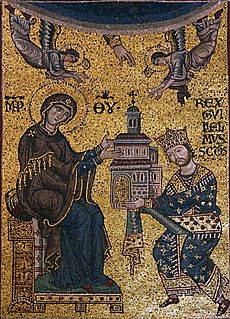Gervase of Tilbury facts for kids
Gervase of Tilbury (who lived around 1150–1220) was an important English person. He was a lawyer for the church, a government official, and a church leader. He was liked by powerful rulers like Henry II of England and later by Emperor Otto IV. Gervase wrote his most famous book, the Otia Imperialia, for Emperor Otto.
Contents
Gervase of Tilbury: His Life and Adventures
Gervase was born around the year 1150 in a place called West Tilbury in Essex, England. His father was a knight. Even though some stories say he grew up in Rome, it's very unlikely.
Traveling and Learning
Gervase loved to travel and learn. He studied and taught church law in Bologna, Italy. In 1177, he was in Venice when Pope Alexander III and Frederick Barbarossa made peace.
Gervase also worked for Henry II of England and his son, "Henry the Young King". For the Young King, he wrote a book called Liber facetiarum, which means 'Book of entertainment'. Sadly, this book is now lost. He also started writing what would later become his famous Otia Imperialia.

Working for Kings and Emperors
After 1183, Gervase began working for William II, the Norman king of Sicily. King William was married to Henry II's daughter, Joan. King William gave Gervase a villa, which is like a fancy house, in a place called Nola.
After King William died in 1189, Gervase moved to Arles. There, he became a judge for church law. In 1198, Otto appointed Gervase as the Marshal of the Kingdom of Burgundy-Arles. This was a very important job. Gervase even married into a local family, which meant he got a palace!
Gervase went with Otto to Rome in 1209 for Otto's special crowning ceremony as Emperor.
Writing His Famous Book
From 1210 to 1214, Gervase spent his time writing the Otia Imperialia. The title means "Recreation for an Emperor". He wrote this book for his boss, Emperor Otto. It was a collection of stories and facts about history, geography, and even some myths and legends.
Gervase also wrote other books. These included a short book about the life and miracles of Saint Antony, and another book about the passing of the Virgin Mary.
Later Life and Legacy
We don't know much about Gervase's last years. Some people think that after Emperor Otto lost a big battle in 1214, Gervase had to retire. It's thought he might have become a church leader in a place called Ebstorf. His work was definitely known by the people who created the famous Ebstorf world map around 1234–1240.
Other records suggest he became a canon, which is a type of church official, later in his life. He might have even been part of a religious group called the Premonstratensians.

